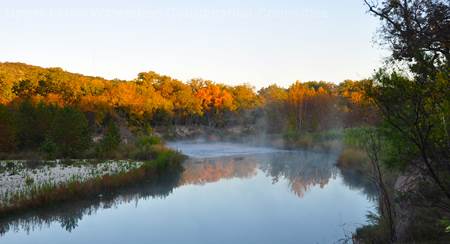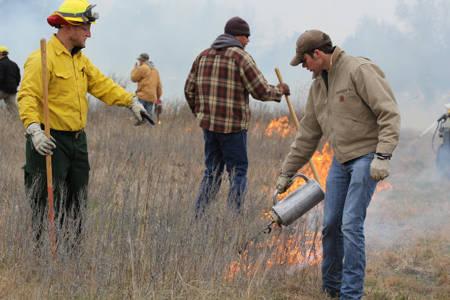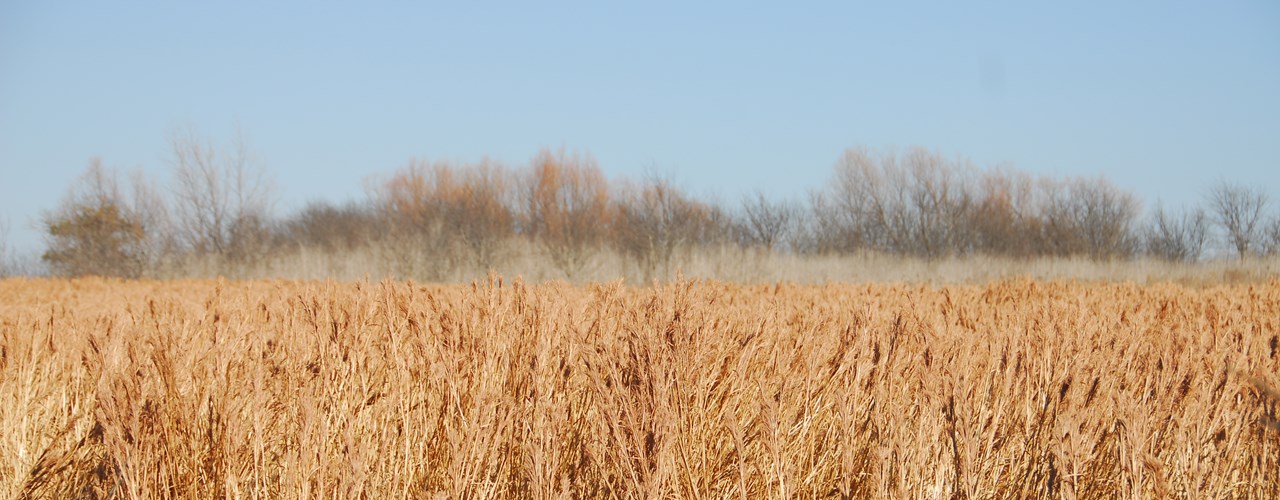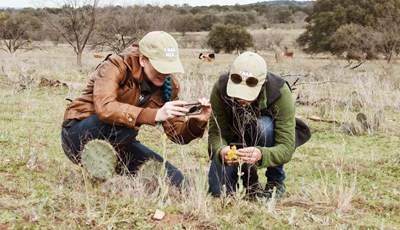Taking care of the land: an intro to private land stewardship
At the Texas A&M Natural Resources Institute (NRI), promoting and supporting private land stewardship is a core part of our mission, values and daily work.
Because 95 percent of Texas’ land mass is privately owned, we see private land stewardship as the most effective and efficient way to improve natural resources in the state. Land stewardship has a multiplying effect: when lands are managed well, the related natural resources are also protected — air, soil, wildlife, open space and water.
Land stewardship is extremely impactful to water quality and conservation. Properly managed land allows rainfall to filter through vegetation, and then it either soaks into the ground, recharging aquifers and springs, or flows into streams, rivers and lakes.
 Upper Llano River in the fall
Upper Llano River in the fall
What does land stewardship actually involve?
Land stewardship involves keeping soils, native vegetation and water bodies intact and healthy, which also benefits wildlife and their habitat. One way ranchers achieve these goals is strategically grazing cattle and other livestock to maintain perennial natural vegetation and habitat. Closely managing stocking density and grazing duration and frequency can produce multiple benefits on the land.
Approaches that farmers use to steward cropland include using cover crops in between growing seasons and reducing tillage to protect soils. Establishing riparian buffers near streams lessens soil erosion into stream segments and creates useable space for wildlife.
On a larger scale, preventing land fragmentation and conversion is another essential way to steward habitat and the watersheds that drain into streams and rivers. Some landowners, organizations and water suppliers are collaborating to use conservation easements to keep rural Texas lands intact.
 Conducting a prescribed burn.
Conducting a prescribed burn.
Follow these links for additional information on common best management practices for land and water stewardship, and more resources for landowners:
- Plant Identification
- Prescribed burning
- Grazing management
- Brush management
- Cover crops
- Reduced tillage
- Riparian area management and restoration
- Soil testing
- Supplemental water sources for livestock and wildlife, such as quail
- Spreader dams
- Multi-species management
- Conservation easements
Private land, public benefits
Thanks to private land managers and landowners, private land stewardship results in invaluable public benefits that all Texans can enjoy or see positive impacts from, such as:
- Sustainable drinking water supplies
- Clean waterways that can be used for recreation and fishing
- Game species for hunting
- Non-game wildlife for recreational viewing
- Open space for hiking and recreation
- Carbon management and sequestration
- Protection from noise pollution and light pollution
Landowners and land managers in Texas are responsible for managing and stewarding the watersheds our rivers run through, the habitats our wildlife populations need to survive, and the agricultural lands that greatly affect our food security.
Next steps for landowners and managers
 Lake Benbrook
Lake Benbrook
Local Texas A&M AgriLife Extension Service county agents are an invaluable resource for land stewardship planning and work. Contacting your local AgriLife Extension agent is a great way to get more information on land management resources and funding assistance opportunities.
If you are a landowner looking for assistance in developing long-range conservation plans, contact your local Natural Resources Conservation Service or Soil and Water Conservation District office.
If you have questions about applying for a wildlife management appraisal for tax valuation, read this Texas Parks and Wildlife Department FAQ and this NRI blog post.
NRI is proud to partner with AgriLife Extension personnel and numerous other entities to help engage and equip the landowners working on and managing Texas lands for the benefit of all Texans. To learn more about how NRI supports such work, read about our Private Land Stewardship Program, research projects and related resources.
Additional articles on private land stewardship:
- Committed to conservation: award-winning landowners share their stewardship strategies
- Conserving private lands conserves water
- Protect our land, protect our water
- Can we start thinking of water as a crop




